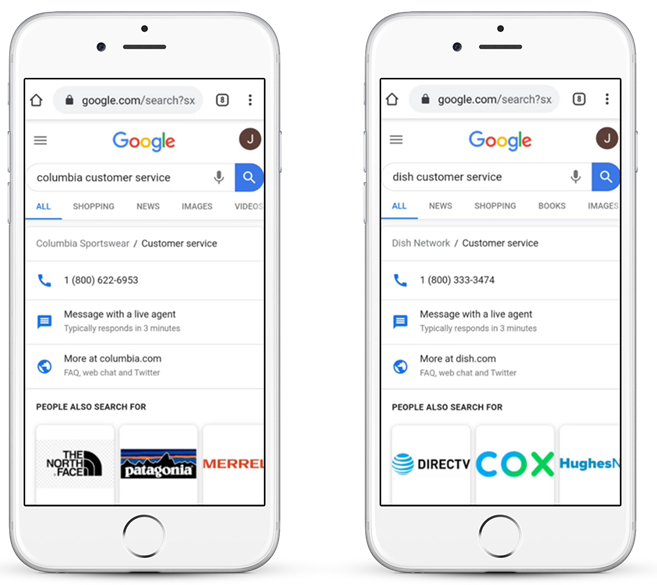

By Rohan Ganeson
Millions of customers use messaging apps such as Facebook Messenger or WhatsApp to keep in touch with friends and family, yet when it comes to customer service and support, their first instinct is still to pick up the phone. Part of this has to do with long ingrained behavior, but the other part has to do with the fact that many businesses have not yet embraced messaging as a channel for engaging customers.
In today’s world, it makes little sense to pick up the phone every time you need to contact a company, which often means long wait times and having to re-state information when you finally reach a customer service agent. Even live chat sessions follow the same paradigm as phone service models, which require customers to stay online to connect with an agent and remain with the agent until an issue is resolved (or not). By contrast, messaging offers businesses an opportunity to transform customer support, and even has the potential to reduce voice as the channel of choice, but there’s some confusion among business leaders about exactly what messaging is and how it differs from the traditional live chat or phone support models.
Like live chat, messaging is about the exchange of information in a conversational digital interface, however, unlike live chat, messaging can be asynchronous, meaning customers can “park” a conversation at their convenience and return to the thread at a later time without having to start over. This functionality can be integrated in any channel such as your web page, your app, or enabled via Apple Messages for Business, Facebook Messenger, WhatsApp, and Google’s Business Messages.
Think about a traditional customer support experience. First, the customer has to set aside time to call the company and work through their issue. This can take anywhere from minutes to hours depending on wait times, what they’re calling about, and what needs to be done on both ends of the call to reach resolution. And if it turns out the issue hasn’t actually been resolved the customer will have to start the process all over again with a repeat call. It’s time consuming and frustrating.
Now, consider the same interaction in an asynchronous messaging setting. A customer can open up the messaging app at their convenience—for example, on a morning commute. They can open up their favorite messaging app (e.g. WhatsApp iMessage, Google Business Messages, etc.) send a message to their service provider to change their billing address by saying “I want to change my billing address.” But then the train arrives and they put the phone away, forgetting about it. On the way home, the next day, or even several days later, they can return to the messaging app at any time and pick up the conversation right where they left off.
Most customer support contacts begin with a web search. Traditionally, search engines have responded with a phone number, however, now with Google and Apple moving to messaging support on phones and in organic search, businesses can respond with a “click to message” option.
By enabling your messaging option to be easily findable on search engines like Google, enterprises can funnel those contacts through the messaging channel first. At the same time, you’re making things better for your customers—which is always better for business. Here are a couple of examples of what that looks like:

There are many advantages to implementing asynchronous messaging. They enable businesses to:
Customers are already using messaging apps in their personal lives, and want to use them to connect with your business. It’s convenient, familiar, and less work than going through traditional support channels. Providing this option makes it easier for customers to get things done the way they want.
One key feature that sets messaging apart from regular chat is the ability to carry on conversations or interactions over time. For example, a customer could start a conversation in the evening, go to bed and continue the conversation the next morning. This is a game changer for busy customers and also a game changer for customer service.
As messaging is intended to be asynchronous, there is no pressure for a single agent to address a customer issue while a customer is waiting. Interacting on customers own time enables service managers to rethink the service model. Messages need to be thought of in terms of a customer’s intent. Understanding the intent enables the service manager to assign urgency and response times. Further a team of experts can handle a message in the background and respond with the most appropriate action. This changes the traditional models for calculating contact rates, handle times and the corresponding contact center heads.
Messaging can be integrated with conversational AI and backend systems that use AI to understand to personalize interactions, which improves satisfaction and loyalty.
Using advanced conversational AI platforms businesses can build BOTs to automate tasks that would have otherwise required human interaction. Automation of simple queries can reach 80-90% while automation of complex transactional queries can achieve up to 30% automation today.
Businesses that have implemented business messaging in contact centers are seeing significant improvement in key metrics:
During COVID-19, customer adoption of business messaging increased by 45 percent in just three months on our platform. Businesses that implemented asynchronous message processing in their contact centers were able to absorb 38 percent additional digital contacts with 33 percent fewer agents. Had messaging not been available as a channel, volume would have dropped by 30 percent impacting CX and revenue.
As business slowly gets back to normal, CxOs have to grapple with how to handle service continuity in periods of business disruptions. Asynchronous messaging provides an avenue to keep your business open at all times. So how can businesses get started?
In summary, messaging is an important way to improve customer service through a channel that customers already love. Done right it is a game changer for your customers and your bottom line.